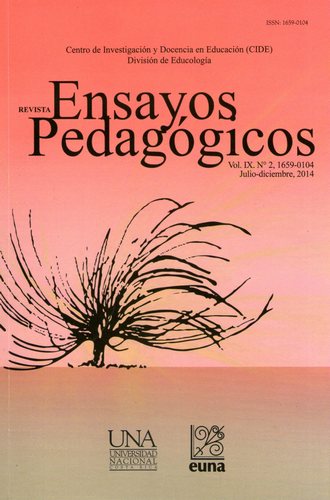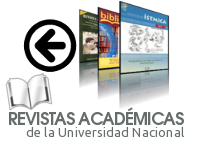Technlogical Affinity of University Faculty
DOI:
https://doi.org/10.15359/rep.9-2.5Keywords:
technological affinity, perceptions, teachers, higher education, ICTAbstract
Technological affinity of faculty members of Higher Education (HE) is a determinant factor for ICT integration in HE institutions. This paper presents a first approach to technological affinity of faculty members of computer science at “Universidad Veracruzana,” which is part of a project called Digital Divide into Universidad Veracruzana (UV), and we found common perceptions among the academic community -that we can understand as a collective habitus, in terms of Bourdieu-. This habitus, in the case of faculty members of computer science is characterized by positive beliefs about the use of ICT in the academic functions such as research, teaching, management; perceptions about computer, laptop and Internet as key resources into their academic context; however, some perceptions of teachers fragment the habitus, as the lack of consideration on the use of mobile devices and other reservations about the use of ICT’s in the academic context.
References
Alarcón E. y Ortiz V. (2013). Estudiantes, profesores y TIC: La investigación en México. En Ramírez- Martinell A. y Casillas A.M., Háblame de TIC: Tecnología Digital en la Educación Superior. 1a ed. Córdoba: Editorial Brujas.
Akbulut, Y., Odabasi, H., & Kuzu, A. (2011). Perceptions of preservice teachers regarding the integration of information and communication technologies in Turkish education faculties. Turkish Online Journal of Educational Technology - TOJET, 10(3), 175-184.
Bourdieu, P. (1987). Los tres estados del capital cultural. Sociológica, UAM,11-17.
Castells, M. (2002). La era de la información: Economía sociedad y cultura. La sociedad red (Cuarta ed., Vol. I). Distrito Federal, México: Siglo XXI Editores.
Clark B. (1991). El Sistema de Educación Superior: Una visión comparativa de la organización académica. Editorial Nueva Imagen/Universidad.
Georgina, D. A., & Olson, M. R. (2008). Integration of technology in higher education: A review of faculty self-perceptions. Internet and Higher Education, 11(1), 1-8.
Georgina, D. A., & Hosford, C. C. (2009). Higher education faculty perceptions on technology integration and training. Teaching and Teacher Education: An International Journal of Research and Studies, 25(5), 690-696.
Gulbahar, Y., & Guven, I. (2008). A survey on ICT usage and the perceptions of social studies teachers in turkey. Educational Technology and Society, 11(3), 37-51.
Guevara, C. H. (2010). Integración tecnológica del profesor universitario desde la teoría social del Pierre Bourdieu. (U. d. Guadalajara, Ed.) Apertura Electrónica, (Número especial), 7.
Johnson, T., Wisniewski, M., Kuhlemeyer, G., Isaacs, G., & Krzykowski, J. (2012). Technology adoption in higher education: Overcoming anxiety through faculty bootcamp. Journal of Asynchronous Learning Networks, 16(2), 63-72.
Johnson, L., Adams Becker, S., Gago, D. Garcia, E., y Martín, S. (2013). NMC Perspectivas Tecnológicas: Educación Superior en América Latina 2013-2018. Un Análisis Regional del Informe Horizonte del NMC. Austin, Texas: The New Media Consortium.
Kopcha, T. J. (2012). Teachers' perceptions of the barriers to technology integration and practices with technology under situated professional development. Computers and Education, 59(4), 1109-1121.
Ouzts, D. T., & Palombo, M. J. (2004). Technology in higher education: A study of perceptions of college professors. Tech trends: Linking Research and Practice to Improve Learning, 48(5), 19-24, 84.
PETIC-UV. (2012). Plan Estratégico de Tecnologías de Información y Comunicaciones, Dirección General de Tecnologías de Información. Recuperado el 15 de Abril, desde http://www.uv.mx/transparencia/files/2012/10/PlandeDesarrolloTecnologicoUV.pdf
Ramírez Martinell, A. (2012). Saberes digitales mínimos en Centros de Auto Acceso. Presentación Plenaria en el Encuentro Internacional de Centros de Auto Acceso. Universidad Veracruzana, Xalapa, Ver.
Ramírez M. A., Morales R.A., Olguín A. P. (2012). Marcos de Referencia de Saberes Digitales. En proceso de publicación, 1-26.
Trowler, P., Knight P. (2000) Departament-level Cultures and the Improvement of Learning and Teaching. Studies in Higher Education. Volume 25, No. 1, Carfax Publishing.
Universidad Veracruzana. (2012). Universidad Veracruzana. Recuperado de http://www.uv.mx/
Universidad Veracruzana (2014). Información Estadística, UV. Recuperado de http://www.uv.mx/informacion-estadistica/consultas-dinamicas/
Zare-ee, A. (2011).University teachers' views on the use of information communication technologies in teaching and research. Turkish Online Journal of Educational Technology- TOJET, 10(3), 318-327.
Downloads
Published
How to Cite
Issue
Section
License
Ensayos Pedagógicos is subscribed to the Attribution-NonCommertial-NoDerivatives 4.0 International Creative Commons Licence, which allows both authors and readers to freely download, store, copy, and distribute the final approved publisehd version of the manuscript (post-print) as long as this is done without commercial purposes, no derivative works are generated, and the source and author are mentioned. As well, Ensayos Pedagógicos declares that authors will remain the rightful owners of the copyrights of their work in perpetuity.







